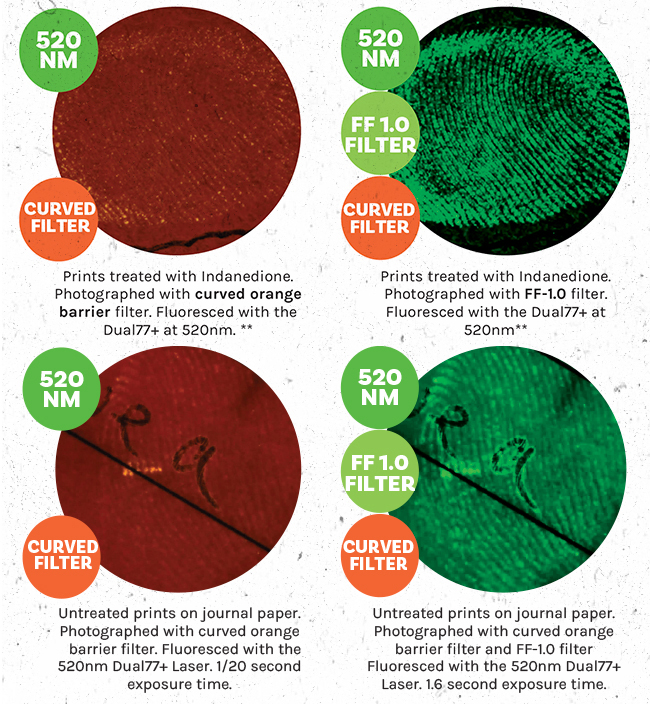Posted by QC on 12th Apr 2022
The Filter Formula using the FF-1.0 Forensic Filter
The documentation of fluorescent fingerprints is commonly accomplished by emitting a specific wavelength of light via an alternate light source onto the substrate then photographing the results with an orange barrier filter attached to a camera lens and adjusting camera settings for the optimal possible contrast. However, many substrates may fluoresce at similar wavelengths as the latent prints, causing the latent prints to be weak or obscured. Having a choice between the standard orange barrier filter, the new FF-1.0 Forensic Filter, and the new Expose Curved Barrier Filter, or a combination thereof, will allow additional contrast of fluorescent latent prints by blocking the inherent fluorescence in certain substrates that may fluoresce at similar wavelengths as the latent fingerprints. Take your latent print photography to the next level. High power Laser or ALS light sources are very effective at inducing fluorescence. However, longer wavelength (orange) background fluorescence sometimes overpowers shorter wavelength (yellow) treated and untreated evidence fluorescence. The new state-of-the-art FF-1.0 Narrow Band-Pass Forensic Filter rejects unwanted orange background fluorescence to enhance fingerprint ridge detail. No need to change your evidence processing techniques or procedures.






